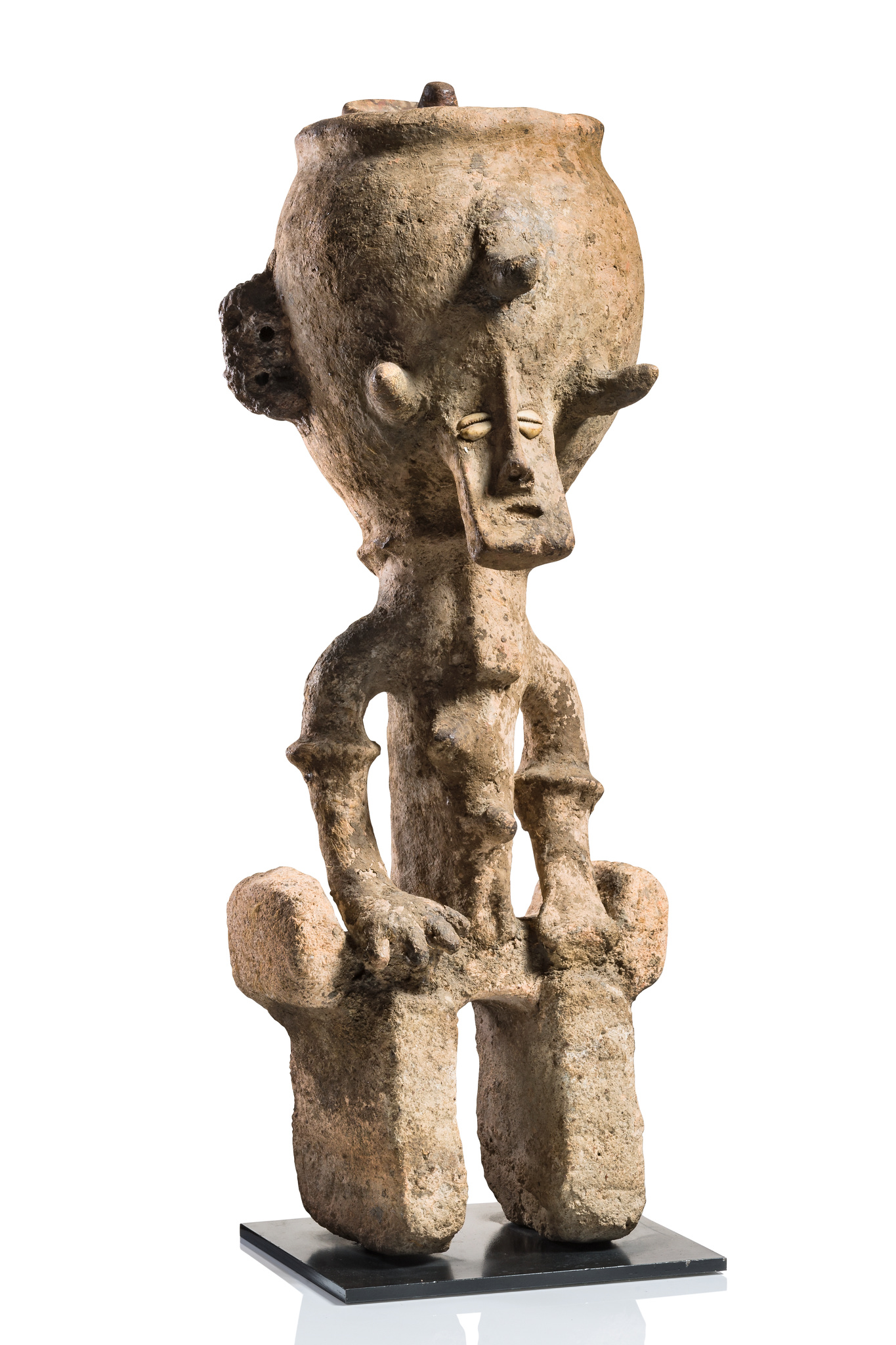Vey rare anthropomorphic caryatid vessel · Côte d'Ivoire, Senufo · ID: 3048144
Robert Stolper, New York, USA (1964)
Stolper Galleries, Robert Stolper and Morton Lipkin, Amsterdam, The Netherlands (1965)
William W. Brill (1918-2003), New York, USA (1965)
By inheritance to his son (2003)
Sotheby’s, New York, 17 November 2006, Lot 13
Toby & Joey Tanenbaum, Toronto, Canada
After a business trip to Nigeria in 1960, William Brill’s great passion for collecting African art began. The majority of his collection was acquired between 1965 and 1969.
With the travelling exhibition “Selections from the William W. Brill Collection of African Art” (1969), he presented 286 outstanding works of African art to the American public. This included the present, extremely rare terracotta object, which he had acquired at the Stolper Gallery in 1965. The exhibition and accompanying catalogue became formative for an entire generation of new collectors.
The Brill Collection represents the spirit of a true collector - works of art brought together with a passionate energy and a tireless spirit. Brill lived with his objects, every corner of his house held African objects that he constantly rearranged and redecorated to enjoy them from a different angle, again and again.
Description
varied beige surface of low-fired clay with evidence of grass matrix, 2-pcs. (lid), cowrie shells, wasp nest on the right side, rest., inventory no. “104”, base
We know almost nothing about Senufo figural terracottas. In old field reports they are mentioned in connection with the sacred groves “sinzanga”. In 1908, Delafosse mentions “rough clay representations of human figures ….which decorate several sacred groves”, while Vendeix, describing the groves as they had been shortly after 1900 says, “They were furnished with satues of effigies in red clay reprensenting all the totems of the family: buffalo, panthers, crocodiles, snakes, antelopes…”.
In the sacred groves “sinzanga” the last and most important stage of initiation into the “Iô” society took place, which is the most important socio-religious institution of the Senufo. Here, the male initiates learned the mythical and religious traditions, the secret knowledge of the society and were accepted into the “Iô” as now adult full members. The most impressive Senufo sculptures, whether made of wood or clay, are related to the rites of the “Iô” society.
The object Vey rare anthropomorphic caryatid vessel with the object ID 3048144 was last part of the auction 97th Auction at November 6, 2021 on Zemanek-Münster Auction house. The object with the lot number 200 achieved a sales price of EUR 7,100.
Here you will find more objects and interesting facts about African art.
Publications
Goldwater, Robert, Senufo Sculpture from West Africa, New York, The Museum of Primitive Art, 1964, p.13, fig 6; Expo catalogue, Selections from the William W.Brill Collection of African Art, Milwaukee Public Museum, Wisconsin, 1969, p.13, fig. 14
AHDRC: 0074840
Exhibition
USA: "Senufo Sculpture from West Africa", 1963: - New York, USA: The Museum of Primitive Art, 20 February-5 May 1963; Chicago: Art Institute of Chicago, 12 July-11 August 1963; Baltimore: Baltimore Museum of Art, 17 September-27 October 1963; Expo in USA: "Selections from the William W.Brill Collection of African Art": Milwaukee, WI: Milwaukee Public Museum, 5 May-31 August 1969; St. Paul, MN: St. Paul Art Center, 23 October-21 December 1969; Duluth, MN: Tweed Art Gallery, University of Minnesota, 14 January-22 February 1970









